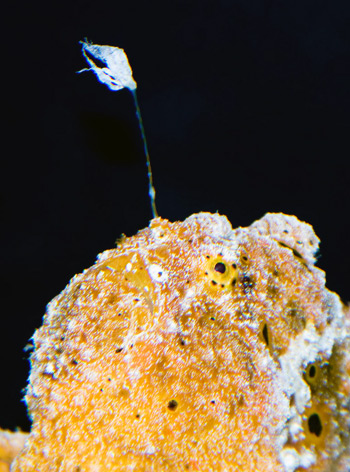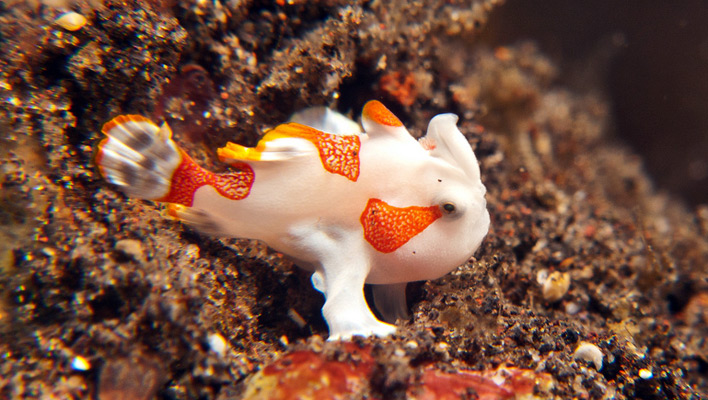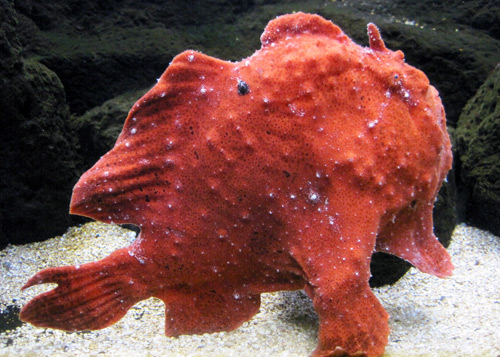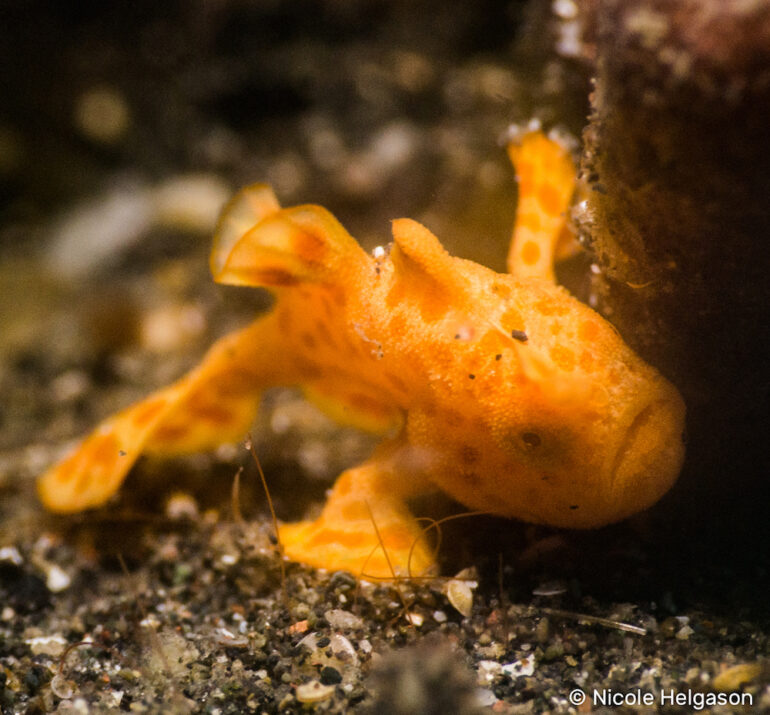
As someone who enjoys a day on the water fishing, I have to give a tip of the hat to the various anglerfishes (a.k.a. frogfishes) of the family Antennariidae. These incredibly cryptic fishes make us human anglers look like rank amateurs. After all, to pursue our fishing passion, we have to purchase rods, reels, line, sinkers, swivels, and all manner of baits and lures. Anglerfishes, on the other hand, have all the fishing tackle they need attached directly to their body—and they don’t even need a license!
Built-in gear
So what type of fishing “tackle” do antennariid anglers possess? Most are equipped with a modified first dorsal spine, known as the illicium, which functions as a fishing rod. Attached to the end of the illicium is a fleshy lure, called the esca.
When not in feeding mode, this built-in fishing pole lies flat against the angler’s body, but when a potential prey item comes into view, the angler will raise its illicium and begin to “cast” its bait in hopes of luring the prey animal close enough to gulp it down. The poor, unsuspecting prey animal, thinking it’s about to enjoy an easy meal, winds up inside the angler’s capacious mouth before it even knows what hit it.
Talk about bait and switch!

And antennariids can consume some surprisingly large prey—some even as long as (or longer than) themselves. That’s something to think about if you ever plan to keep one of these anglers in a home aquarium.
What are they biting on?
Interestingly, different antennariid species (most that enter the hobby belong to the genus Antennarius) possess variously shaped and sized lures. For example, some are worm-like, some more fish-like, and others may have no particularly discernible shape but look irresistibly edible to fishes or crustaceans nonetheless.
Different species even manipulate their baits in different ways—waving or jiggling the illicium in a manner that imparts the most naturalistic movement possible to the lure.
Perfect camouflage
I should point out that the “bait and switch” feeding method is only one way that antennariids dupe their prey. This technique is effective only because the prey item cannot see the anglerfish. Why not? In addition to being expert anglers, antennariids are among the best camouflaged species in the sea.

Antennariids’ bodies are covered with all kinds of warts, bumps, lumps, and other appendages, and they’re capable of changing color to match their surroundings. To the casual observer, an angler may look like a sponge, patch of algae, or any other innocuous reef life. In fact, even when you know an antennariid is right in front of you, it can be very difficult to discern its outline against the reef backdrop.



